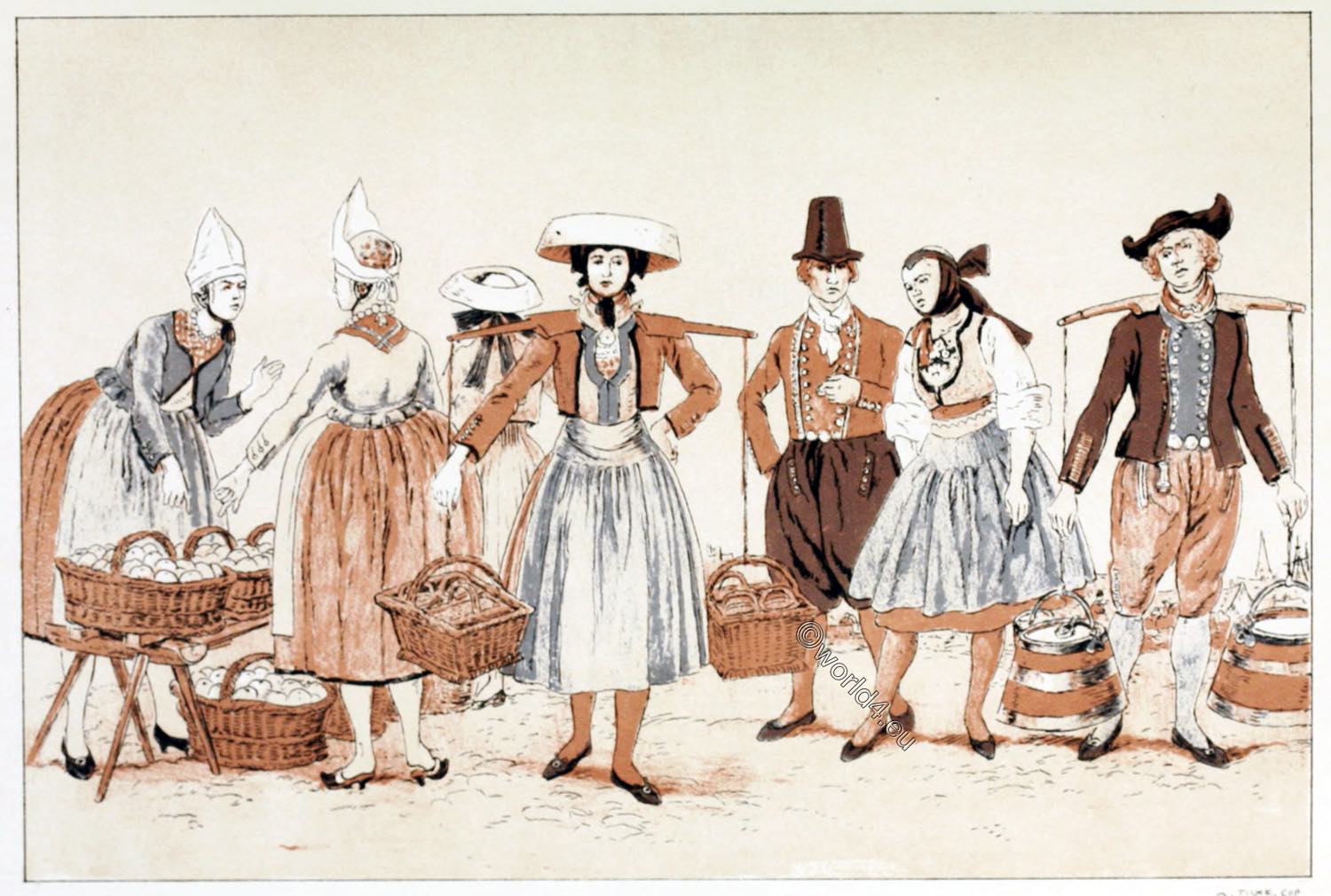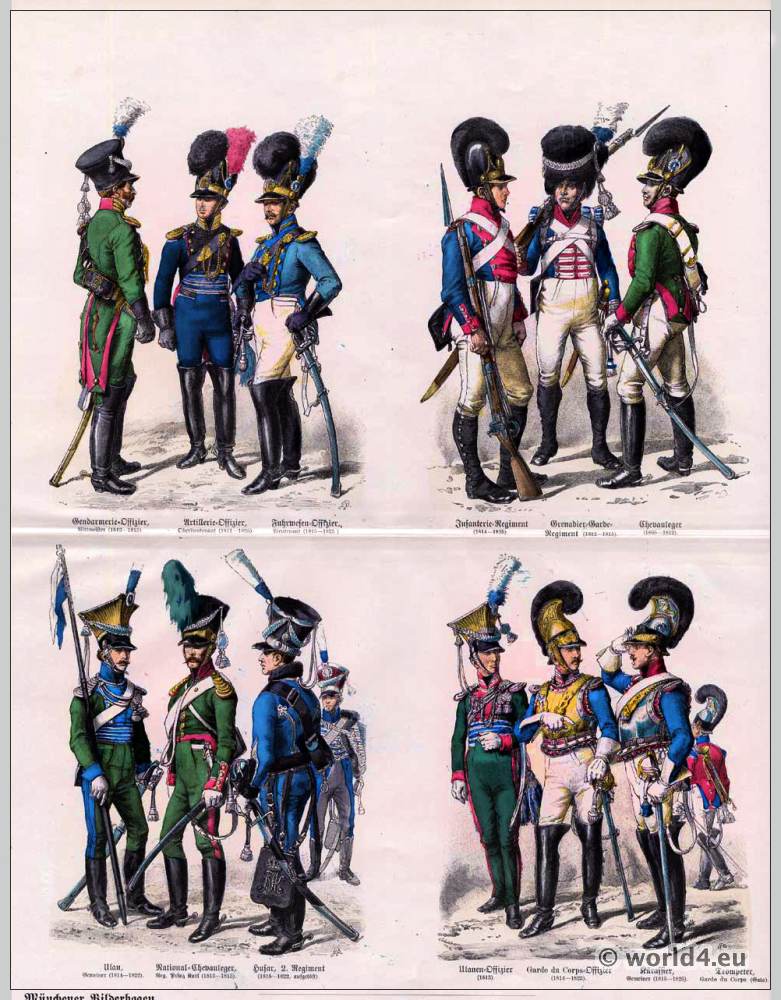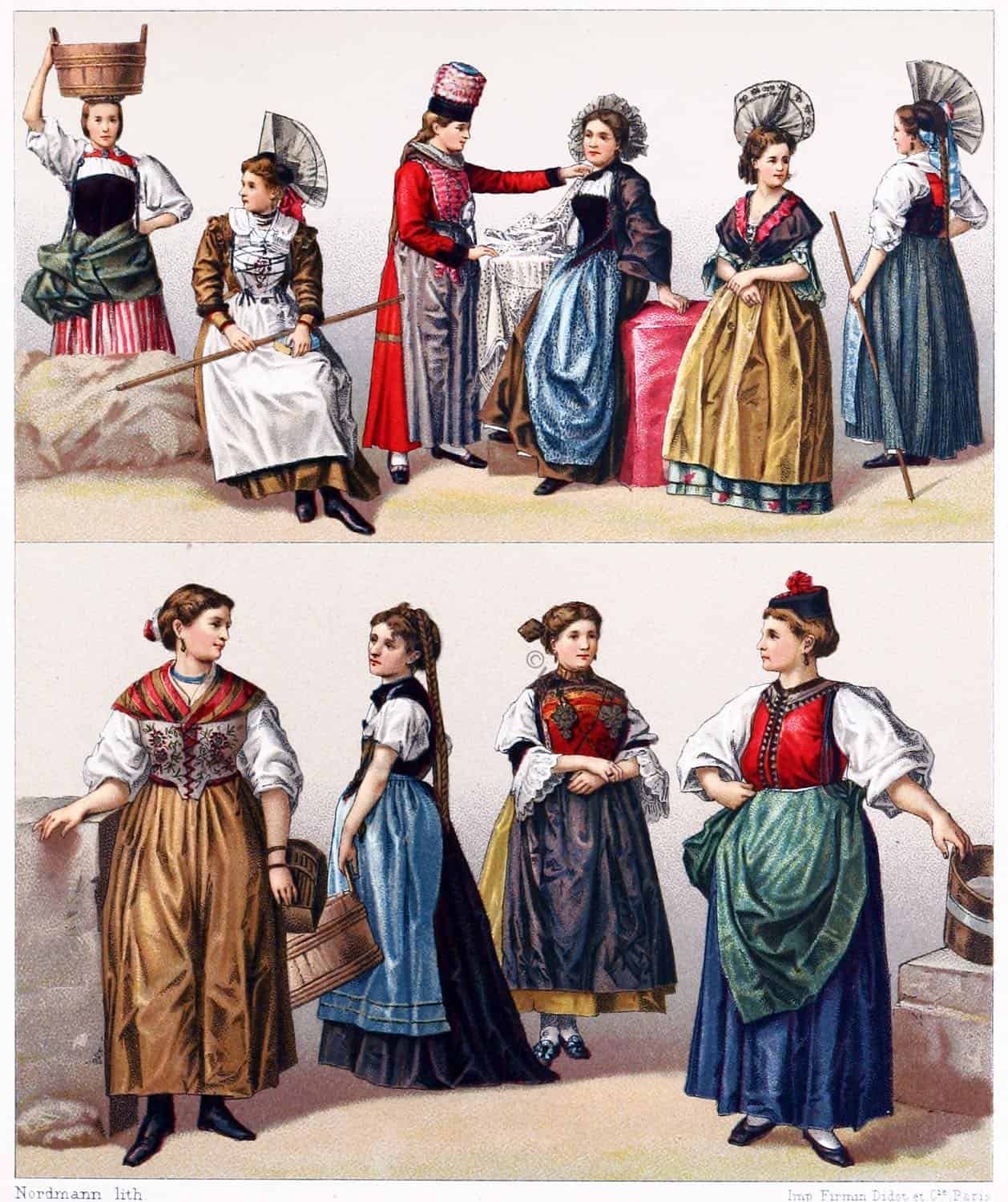
FRANCE 19TH CENTURY.
Illustrations above:
6, 3, 7, 11, 5, 4,
Illustrations below:
1, 9, 10, 2, 8,
Religious Orders. Habits of various nuns.
- No. 1. Former French Carmelite. Carmelites are the members of the Order of the Brothers of the Blessed Virgin Mary of Mount Carmel (lat. Ordo Fratrum Beatissimae Mariae Virginis de Monte Carmelo), which was founded around 1150 on the Carmel mountains in the Holy Land and originates from the tradition of hermitism. The members of this branch of the order for women, founded in the second half of the 15th century. Between 1206 and 1214 they received a rule from the Patriarch of Jerusalem, which was confirmed by Pope Honorius III in 1226. Since 1235 Carmelites moved to Europe. In 1247 they were legally incorporated into the mendicant order.
- No. 2. Sister of the Hospital of St. John the Baptist in Beauvais, in choir dress, before the reform of 1646.
- No. 3. St. Catherine’s Hospitaller in choir dress.
- No. 4. Hospitaller of St Catherine’s in Paris, in the usual house dress.
- No. 5. Novice of the Hospital Sisters of St. Catherine in drag dress.
- No. 6. Nun of the Order of Penitents. Order of St Mary Magdalene.
- No. 7. Nun of the Order of Magdalene of Metz. The Magdalene Sisters, Sisters of the Order of St. Mary Magdalene of Penance, Latin: Ordo Sanctae Mariae Magdalenae de poenitentia (Order abbreviation: OSMM), also called Sorores poenitentes, penitentes, are a Catholic religious order. The order was founded around 1230 in the German-speaking area, donated in 1224 by the priest Rudolf von Worms in Worms and is considered the oldest purely female order in the Catholic Church. It had numerous monasteries in all parts of the Holy Roman Empire as well as in Hungary and Poland. Its patron saint was Mary Magdalene, the converted sinner from the New Testament. True to the example of its patroness, the purpose of the order was initially a common monastic life of penitent streetwomen and women at risk, and from about 1250 on also the provision of food for unmarried members of middle-class families. Increasingly, penitent women voluntarily took the place of converted women. The Magdalenian women lived according to the Rule of Augustine. They wore white, simple dresses, slept dressed and belted on straw and a woolen cloth and were never allowed to be idle. Because of their white habit they were also called “white women”.
- No. 8. Nun of the Premonstratensians in ordinary dress. Premonstratensian women are the female branch of the Premonstratensian Order. They consist of Premonstratensian choir women and the Premonstratensian women of the Third Order, also called Norbertine women.
- No. 9. Noble Benedictine nun of Bourbourg in choral dress.
- No. 10. distinguished Benedictine nun of Bourbourg, usual dress.
- No. 11. Penitentine Order in Paris after reform
(From the works of Helyot, Schoonebeck and Bar on the costumes of the spiritual and knightly orders)
Source: History of the costume in chronological development by Albert Charles Auguste Racinet. Edited by Adolf Rosenberg. Berlin 1888.






